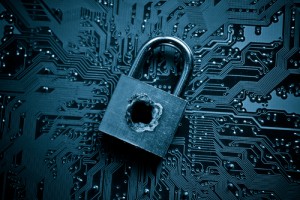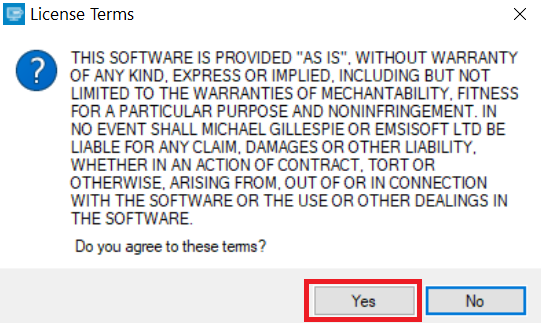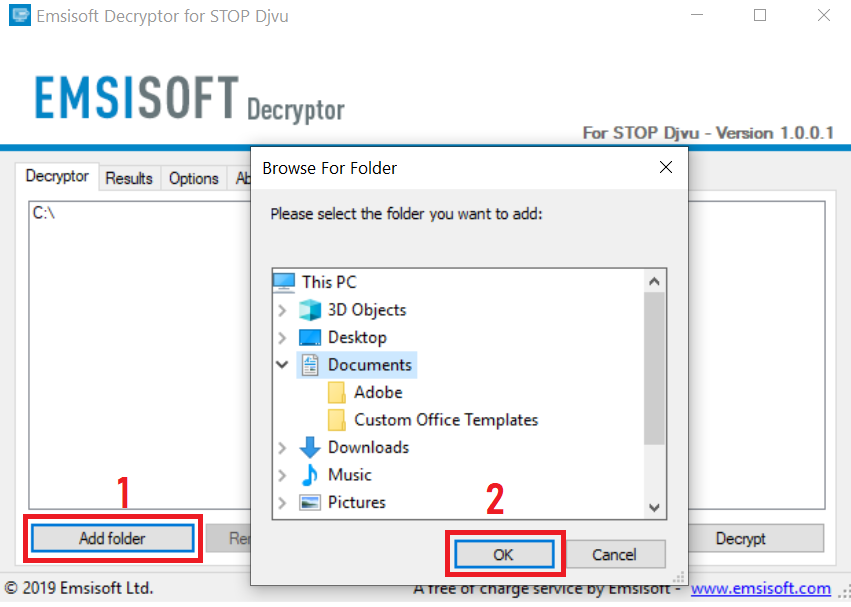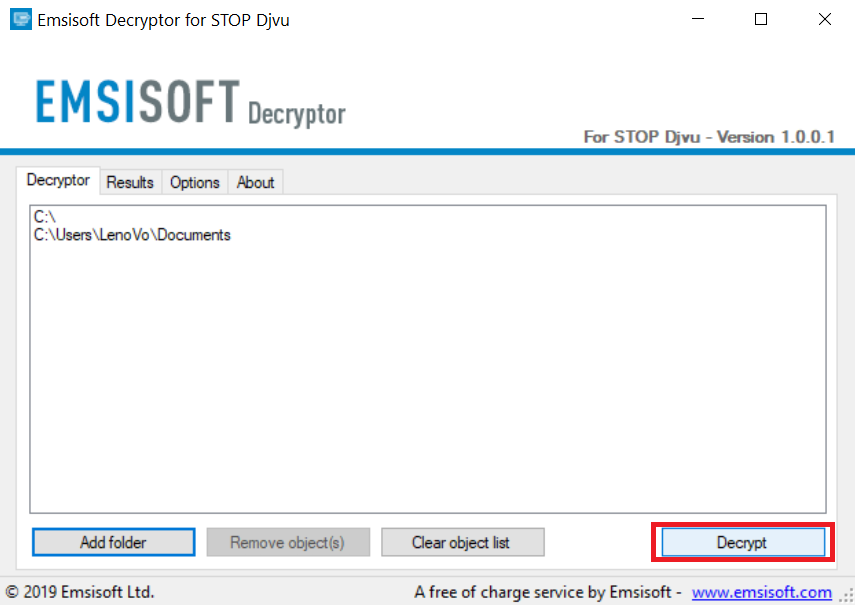 This blog entry has been made with the fundamental reason to clarify how you can expel the .udjvuq infection from your PC and how to attempt and reestablish information encoded by it.
This blog entry has been made with the fundamental reason to clarify how you can expel the .udjvuq infection from your PC and how to attempt and reestablish information encoded by it.
One more case of the DJVU ransomware infection has quite recently showed up. The ransomware appears to convey the .udjvuq suffix attached to the objects scrambled by it. The infection plans to encode the documents on the PCs assaulted by it and afterward set the .udjvuq suffix to the scrambled files as an addition. The infection supposedly utilizes RSA and AES encryption to conduct its encryption. It also drops a payoff note, called “_openme.txt” and it contains deliver guidelines on how the injured individual can pay a heavy payment so as to recover his or her documents back to typical. In the event that your PC was infected by the .udjvuq infection, we would recommend that you read this article.

Threat Summary
| Name | .udjvuq Files Ransomware |
| Type | Ransomware, Crypto virus |
| Short Description | Variant of the [wplinkpreview url=”https://sensorstechforum.com/remove-djvu-files-virus/”].djvu file ransomware. Encrypts files and wants you to pay ransom in BitCoin to get them back. |
| Symptoms | The files on the compromised computer are encrypted and the file extension .uudjvu is added. A ransom note, called _openme.txt is also dropped on the victim PC. |
| Distribution Method | Spam Emails, Email Attachments |
| Detection Tool |
See If Your System Has Been Affected by malware
Download
Malware Removal Tool
|
User Experience | Join Our Forum to Discuss .udjvuq Files Ransomware. |
| Data Recovery Tool | Windows Data Recovery by Stellar Phoenix Notice! This product scans your drive sectors to recover lost files and it may not recover 100% of the encrypted files, but only few of them, depending on the situation and whether or not you have reformatted your drive. |

.udjvuq File Ransomware – Infection Methods
The infection technique employed by the makers of this ransomware infection is purportedly malignant messages that contain attached files which are really malicious documents. This method otherwise called malspam is used by crooks to decieve the average John Doe that they have gotten an urgent email, similar to a file from a bank, a receipt, an invoice or something quite personal such as notice from your boss that you have been fired from work. The majority of this is finished with the objective to motivate inexperienced users to open the file or attachment and once this is done, the .udjvuq files infection may start it’s malicious activities.
Moreover, besides malicious e-mails, the .udjvuq infection may likewise perform the attack through different distinctive kinds of files that are transferred on the web. These objects might be programs that average users will in general download on the web and frequently end up being:
- Portable software.
- Activation software.
- Patches for software.
- Cracks.
- Driver installers.
- Keygens.
The files are really infection methods, whose main intention is to get users to trigger a Dropper that aims to drop the payload of .udjvuq infection on the attacked PC.

.udjvuq Ransomware – Activity
Once the .udjvuq infection gets to your PC, the malware may start to conduct a lot of nefarious actions, beginning with dropping the ransomware payload on the PCs of unfortunate casualties. The payload may comprise of more than one infection file and they could be situated In the normally utilized Windows directories under various names:
- %AppData%
- %Local%
- %Roaming%
- %LocalLow%
- %Temp
Among the virus files is likewise the infection’s payment note which contains guidelines for the exploited people on the method to pay a payoff charge to get the crooks to recover their files so that they are able to work once more. The note is named _openme.txt and it has the accompanying message to exploited people:
———————————————- ALL YOUR FILES ARE ENCRYPTED ———————————————–
Don’t worry, you can return all your files! All your files documents, photos, databases and other important are encrypted with strongest encryption and unique key. The only method of recovering files is to purchase decrypt tool and unique key for you. This software will decrypt all your encrypted files. What guarantees do we give to you? You can send one of your encrypted file from your PC and we decrypt it for free. But we can decrypt only 1 file for free. File must not contain valuable information Don’t try to use third-party decrypt tools because it will destroy your files. Discount 50% available if you contact us first 72 hours.
—————————————————————————————————————————
To get this software you need write on our e-mail: helpshadow@india.com
Reserve e-mail address to contact us: helpshadow@firemail.cc
Your personal ID: [redacted 43 alphanumeric chars]
Besides the payoff note of .udjvuq ransomware, the infection may likewise establish with the server of the culprits who are behind it so as to relay data about the victimized PC, such as: IP address.
- System data.
- Passwords.
- Content of files.
- Take Screenshots.
- Change organizing settings.
The .udjvuq infection may proceed with it’s actions and simply erase the shadow volume duplicates of the PC. This is done to eliminate the chance of victims to get their files restored. To achieve their true objective, the criminals may have designed a script that deletes these duplicates by running admin command lines in Windows Command Prompt, some of which might be among the ones underneath:
→ sc stop VVS
sc stop wscsvc
sc stop WinDefend
sc stop wuauserv
sc stop BITS
sc stop ERSvc
sc stop WerSvc
cmd.exe /C bcdedit /set {default} recoveryenabled No
cmd.exe /C bcdedit /set {default} bootstatuspolicy ignoreallfailures
C:\Windows\System32\cmd.exe” /C vssadmin.exe Delete Shadows /All /Quiet
Furthermore, to get the infection file of the .udjvuq files virus to run consequently when you begin Windows, the ransomware may likewise create entries in the Run and RunOnce sub-keys, which could contain the location of the module, in charge of encryption:
→ HKEY_LOCAL_MACHINE\Software\Microsoft\Windows\CurrentVersion\Run
HKEY_CURRENT_USER\Software\Microsoft\Windows\CurrentVersion\Run
HKEY_LOCAL_MACHINE\Software\Microsoft\Windows\CurrentVersion\RunOnce
HKEY_CURRENT_USER\Software\Microsoft\Windows\CurrentVersion\RunOnce

.udjvuq Ransomware – Encryption
To render your documents ineffective, the .udjvuq infection may set different diverse kinds of strategies set up. One of them is to examine for the usually utilized documents on your PC and identify and encode them dependent on their file type. The most regularly encoded file types are for the most part among the ones beneath:
→ “PNG .PSD .PSPIMAGE .TGA .THM .TIF .TIFF .YUV .AI .EPS .PS .SVG .INDD .PCT .PDF .XLR .XLS .XLSX .ACCDB .DB .DBF .MDB .PDB .SQL .APK .APP .BAT .CGI .COM .EXE .GADGET .JAR .PIF .WSF .DEM .GAM .NES .ROM .SAV CAD Files .DWG .DXF GIS Files .GPX .KML .KMZ .ASP .ASPX .CER .CFM .CSR .CSS .HTM .HTML .JS .JSP .PHP .RSS .XHTML. DOC .DOCX .LOG .MSG .ODT .PAGES .RTF .TEX .TXT .WPD .WPS .CSV .DAT .GED .KEY .KEYCHAIN .PPS .PPT .PPTX ..INI .PRF Encoded Files .HQX .MIM .UUE .7Z .CBR .DEB .GZ .PKG .RAR .RPM .SITX .TAR.GZ .ZIP .ZIPX .BIN .CUE .DMG .ISO .MDF .TOAST .VCD SDF .TAR .TAX2014 .TAX2015 .VCF .XML Audio Files .AIF .IFF .M3U .M4A .MID .MP3 .MPA .WAV .WMA Video Files .3G2 .3GP .ASF .AVI .FLV .M4V .MOV .MP4 .MPG .RM .SRT .SWF .VOB .WMV 3D .3DM .3DS .MAX .OBJ R.BMP .DDS .GIF .JPG ..CRX .PLUGIN .FNT .FON .OTF .TTF .CAB .CPL .CUR .DESKTHEMEPACK .DLL .DMP .DRV .ICNS .ICO .LNK .SYS .CFG”
After the .udjvuq infection identifies the documents on the attacked machine that are qualified for encryption, the malware may utilize at least one of the accompanying encryption calculations so as to encrypt data:
- AES-256
- RSA-2048
- Salsa20
The encryption should be possible in more than one way, while the most well-known strategy is to duplicate the original file and after that scramble the duplicate by modifying information portions from it with the encryption algorithms, enough to make it useless. After the encryption is done, the .udjvuq files infection may erase the original files and leave just the encoded ones, looking, similar to the example underneath:
New Text Document.txt.udjvuq

Remove .udjvuq File Ransomware and Try Recovering Data
On the off chance that you need to evacuate the .udjvuq documents infection, we would recommend that you take advantage of the guideline steps that are underneath this article. They have been made with the goal to remove this ransomware either by yourself or automatically. On the off chance that the manual removal steps for the .udjvuq ransomware don’t appear to be of any assistance, we would propose that you follow the automatic removal steps. They have the directions to run a sweep with an advanced malware remediation software, which is often referred by security experts as the most ideal approach to detect and expel all files and objects, identified with .udjvuq ransomware.
On the off chance that you need to attempt and reestablish access to the data, scrambled by .udjvuq file infection, we would propose that you see the file recovery choices we have introduced underneath. They have been made to assist you with trying to restore at least some of the files, in spite of the fact that you can’t make sure 100% they will work for every one of your files.
- Step 1
- Step 2
- Step 3
- Step 4
- Step 5
Step 1: Scan for .udjvuq Files Ransomware with SpyHunter Anti-Malware Tool



Ransomware Automatic Removal - Video Guide
Step 2: Uninstall .udjvuq Files Ransomware and related malware from Windows
Here is a method in few easy steps that should be able to uninstall most programs. No matter if you are using Windows 10, 8, 7, Vista or XP, those steps will get the job done. Dragging the program or its folder to the recycle bin can be a very bad decision. If you do that, bits and pieces of the program are left behind, and that can lead to unstable work of your PC, errors with the file type associations and other unpleasant activities. The proper way to get a program off your computer is to Uninstall it. To do that:


 Follow the instructions above and you will successfully delete most unwanted and malicious programs.
Follow the instructions above and you will successfully delete most unwanted and malicious programs.
Step 3: Clean any registries, created by .udjvuq Files Ransomware on your computer.
The usually targeted registries of Windows machines are the following:
- HKEY_LOCAL_MACHINE\Software\Microsoft\Windows\CurrentVersion\Run
- HKEY_CURRENT_USER\Software\Microsoft\Windows\CurrentVersion\Run
- HKEY_LOCAL_MACHINE\Software\Microsoft\Windows\CurrentVersion\RunOnce
- HKEY_CURRENT_USER\Software\Microsoft\Windows\CurrentVersion\RunOnce
You can access them by opening the Windows registry editor and deleting any values, created by .udjvuq Files Ransomware there. This can happen by following the steps underneath:


 Tip: To find a virus-created value, you can right-click on it and click "Modify" to see which file it is set to run. If this is the virus file location, remove the value.
Tip: To find a virus-created value, you can right-click on it and click "Modify" to see which file it is set to run. If this is the virus file location, remove the value.
Before starting "Step 4", please boot back into Normal mode, in case you are currently in Safe Mode.
This will enable you to install and use SpyHunter 5 successfully.
Step 4: Boot Your PC In Safe Mode to isolate and remove .udjvuq Files Ransomware





Step 5: Try to Restore Files Encrypted by .udjvuq Files Ransomware.
Method 1: Use STOP Decrypter by Emsisoft.
Not all variants of this ransomware can be decrypted for free, but we have added the decryptor used by researchers that is often updated with the variants which become eventually decrypted. You can try and decrypt your files using the instructions below, but if they do not work, then unfortunately your variant of the ransomware virus is not decryptable.
Follow the instructions below to use the Emsisoft decrypter and decrypt your files for free. You can download the Emsisoft decryption tool linked here and then follow the steps provided below:
1 Right-click on the decrypter and click on Run as Administrator as shown below:

2. Agree with the license terms:

3. Click on "Add Folder" and then add the folders where you want files decrypted as shown underneath:

4. Click on "Decrypt" and wait for your files to be decoded.

Note: Credit for the decryptor goes to Emsisoft researchers who have made the breakthrough with this virus.
Method 2: Use data recovery software
Ransomware infections and .udjvuq Files Ransomware aim to encrypt your files using an encryption algorithm which may be very difficult to decrypt. This is why we have suggested a data recovery method that may help you go around direct decryption and try to restore your files. Bear in mind that this method may not be 100% effective but may also help you a little or a lot in different situations.
Simply click on the link and on the website menus on the top, choose Data Recovery - Data Recovery Wizard for Windows or Mac (depending on your OS), and then download and run the tool.
.udjvuq Files Ransomware-FAQ
What is .udjvuq Files Ransomware Ransomware?
.udjvuq Files Ransomware is a ransomware infection - the malicious software that enters your computer silently and blocks either access to the computer itself or encrypt your files.
Many ransomware viruses use sophisticated encryption algorithms to make your files inaccessible. The goal of ransomware infections is to demand that you pay a ransom payment to get access to your files back.
What Does .udjvuq Files Ransomware Ransomware Do?
Ransomware in general is a malicious software that is designed to block access to your computer or files until a ransom is paid.
Ransomware viruses can also damage your system, corrupt data and delete files, resulting in the permanent loss of important files.
How Does .udjvuq Files Ransomware Infect?
Via several ways..udjvuq Files Ransomware Ransomware infects computers by being sent via phishing emails, containing virus attachment. This attachment is usually masked as an important document, like an invoice, bank document or even a plane ticket and it looks very convincing to users.
Another way you may become a victim of .udjvuq Files Ransomware is if you download a fake installer, crack or patch from a low reputation website or if you click on a virus link. Many users report getting a ransomware infection by downloading torrents.
How to Open ..udjvuq Files Ransomware files?
You can't without a decryptor. At this point, the ..udjvuq Files Ransomware files are encrypted. You can only open them once they are decrypted using a specific decryption key for the particular algorithm.
What to Do If a Decryptor Does Not Work?
Do not panic, and backup the files. If a decryptor did not decrypt your ..udjvuq Files Ransomware files successfully, then do not despair, because this virus is still new.
Can I Restore "..udjvuq Files Ransomware" Files?
Yes, sometimes files can be restored. We have suggested several file recovery methods that could work if you want to restore ..udjvuq Files Ransomware files.
These methods are in no way 100% guaranteed that you will be able to get your files back. But if you have a backup, your chances of success are much greater.
How To Get Rid of .udjvuq Files Ransomware Virus?
The safest way and the most efficient one for the removal of this ransomware infection is the use a professional anti-malware program.
It will scan for and locate .udjvuq Files Ransomware ransomware and then remove it without causing any additional harm to your important ..udjvuq Files Ransomware files.
Can I Report Ransomware to Authorities?
In case your computer got infected with a ransomware infection, you can report it to the local Police departments. It can help authorities worldwide track and determine the perpetrators behind the virus that has infected your computer.
Below, we have prepared a list with government websites, where you can file a report in case you are a victim of a cybercrime:
Cyber-security authorities, responsible for handling ransomware attack reports in different regions all over the world:
Germany - Offizielles Portal der deutschen Polizei
United States - IC3 Internet Crime Complaint Centre
United Kingdom - Action Fraud Police
France - Ministère de l'Intérieur
Italy - Polizia Di Stato
Spain - Policía Nacional
Netherlands - Politie
Poland - Policja
Portugal - Polícia Judiciária
Greece - Cyber Crime Unit (Hellenic Police)
India - Mumbai Police - CyberCrime Investigation Cell
Australia - Australian High Tech Crime Center
Reports may be responded to in different timeframes, depending on your local authorities.
Can You Stop Ransomware from Encrypting Your Files?
Yes, you can prevent ransomware. The best way to do this is to ensure your computer system is updated with the latest security patches, use a reputable anti-malware program and firewall, backup your important files frequently, and avoid clicking on malicious links or downloading unknown files.
Can .udjvuq Files Ransomware Ransomware Steal Your Data?
Yes, in most cases ransomware will steal your information. It is a form of malware that steals data from a user's computer, encrypts it, and then demands a ransom in order to decrypt it.
In many cases, the malware authors or attackers will threaten to delete the data or publish it online unless the ransom is paid.
Can Ransomware Infect WiFi?
Yes, ransomware can infect WiFi networks, as malicious actors can use it to gain control of the network, steal confidential data, and lock out users. If a ransomware attack is successful, it could lead to a loss of service and/or data, and in some cases, financial losses.
Should I Pay Ransomware?
No, you should not pay ransomware extortionists. Paying them only encourages criminals and does not guarantee that the files or data will be restored. The better approach is to have a secure backup of important data and be vigilant about security in the first place.
What Happens If I Don't Pay Ransom?
If you don't pay the ransom, the hackers may still have access to your computer, data, or files and may continue to threaten to expose or delete them, or even use them to commit cybercrimes. In some cases, they may even continue to demand additional ransom payments.
Can a Ransomware Attack Be Detected?
Yes, ransomware can be detected. Anti-malware software and other advanced security tools can detect ransomware and alert the user when it is present on a machine.
It is important to stay up-to-date on the latest security measures and to keep security software updated to ensure ransomware can be detected and prevented.
Do Ransomware Criminals Get Caught?
Yes, ransomware criminals do get caught. Law enforcement agencies, such as the FBI, Interpol and others have been successful in tracking down and prosecuting ransomware criminals in the US and other countries. As ransomware threats continue to increase, so does the enforcement activity.
About the .udjvuq Files Ransomware Research
The content we publish on SensorsTechForum.com, this .udjvuq Files Ransomware how-to removal guide included, is the outcome of extensive research, hard work and our team’s devotion to help you remove the specific malware and restore your encrypted files.
How did we conduct the research on this ransomware?
Our research is based on an independent investigation. We are in contact with independent security researchers, and as such, we receive daily updates on the latest malware and ransomware definitions.
Furthermore, the research behind the .udjvuq Files Ransomware ransomware threat is backed with VirusTotal and the NoMoreRansom project.
To better understand the ransomware threat, please refer to the following articles which provide knowledgeable details.
As a site that has been dedicated to providing free removal instructions for ransomware and malware since 2014, SensorsTechForum’s recommendation is to only pay attention to trustworthy sources.
How to recognize trustworthy sources:
- Always check "About Us" web page.
- Profile of the content creator.
- Make sure that real people are behind the site and not fake names and profiles.
- Verify Facebook, LinkedIn and Twitter personal profiles.













